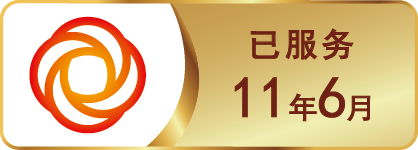China's central bank on Friday raised seven-day reverse repurchase agreements (reverse repos) rate - one of its key policy rates - for the first time since 2013.
The increase is a further sign that the People's Bank of China (PBOC) is moving to a tighter policy as the domestic economy shows signs of improvement, experts noted on Friday.
The central bank's surprise decision, which came on the first trading day of the Chinese New Year, will see the seven-day reverse repo rate increase by 10 basis points to 2.35 percent.
The PBOC also raised the rate for 14-day reverse repos to 2.5 percent from 2.4 percent, and the 28-day open market operations rate to 2.65 percent compared with the previous 2.55 percent, according to the PBOC.
Reverse repos is a process in which central banks purchase securities from banks with an agreement to resell them in the future.
Besides reverse repos, the PBOC also increased the lending rates on its standing lending facility (SLF) short-term loans. SLF is a tool used by the PBOC to give liquidity support to policy banks and commercial lenders.
The government decision to raise policy interest rates comes after fresh data pointed toward a strong economic rebound since the fourth quarter of 2016.
"The rebounding economic environment has provided an opportunity for the PBOC to raise the policy interest rates," Liu Dongliang, a senior analyst at China Merchants Bank, told the Global Times on Friday.
Liu also noted that the increase on reverse repo rate and SLF rate is a further reflection of the government's efforts on financial deleveraging and controlling the systematic risks in the financial sector.
According to Liu, rumors have been circulating that large amounts of loans have been issued since the beginning of this year, and the PBOC's new policies might be aimed at suppressing financial institutions' lending impulse.
Liu Xuezhi, an economist with the Bank of Communications, said that as the market expectations are rising for the US government to further raise the interest rates, the PBOC is also forced to take synchronous measures so as to lower the depreciation pressure on the yuan.
Policy shift
Some overseas media have cited experts as saying that the PBOC's decision is an important signal that the central bank has shifted toward a "tightening bias."
According to Liu Xuezhi, the government has been lowering the interest rates in the recent few years to boost domestic economy, and the effects of such a policy have become visible.
On the other hand, the side effects of such a policy have also appeared, such as over-development in the real estate sector, and it's time for the government to make adjustment in its monetary policy, he told the Global Times.
Liu Dongliang pointed out that the interest rates increases on Friday are not "typical" as the government has not yet changed the benchmark one-year deposit and loan interest rates.
The last time the PBOC adjusted the benchmark one-year interest rates was in August 2015, when it lowered the deposit and loan interest rates by 0.25 basis points, respectively.
Liu Dongliang said that whether or not the PBOC will continue to tighten the monetary policy will depend on whether financial lending will continue to exceed government expectations and whether the domestic economy will maintain its current trend.




















































